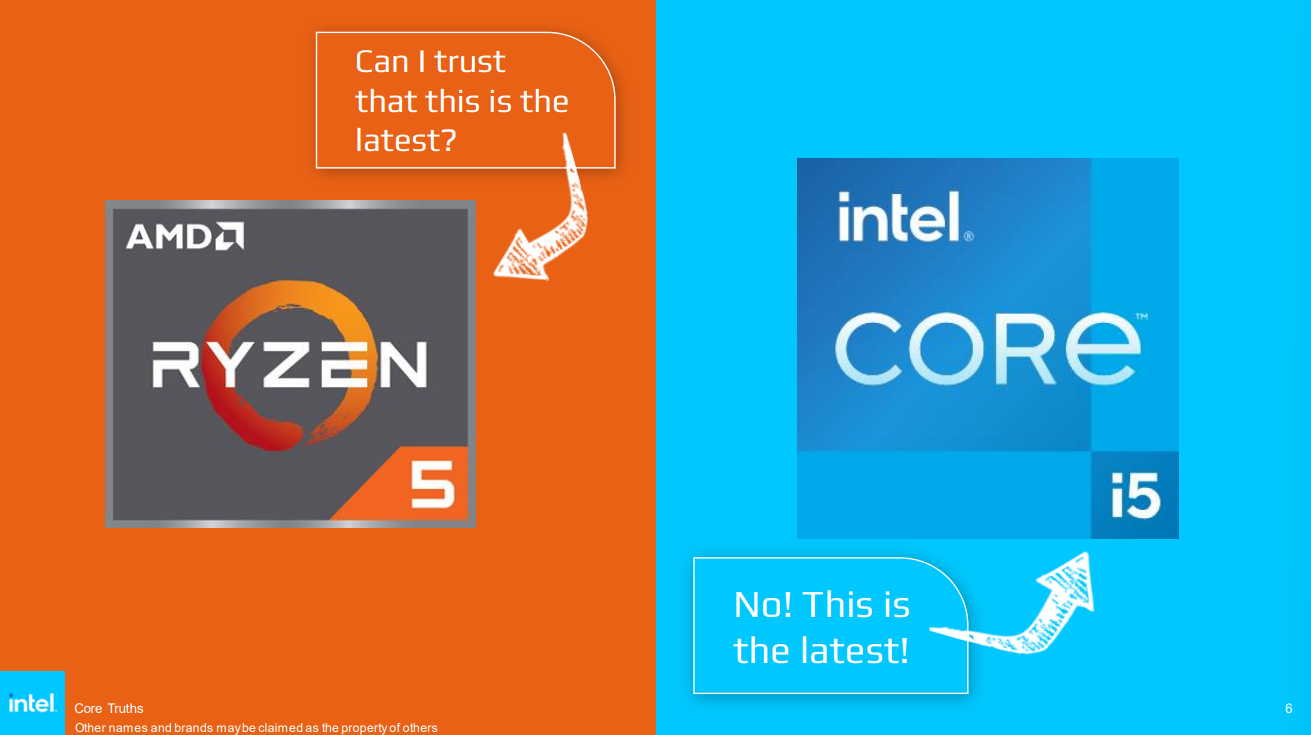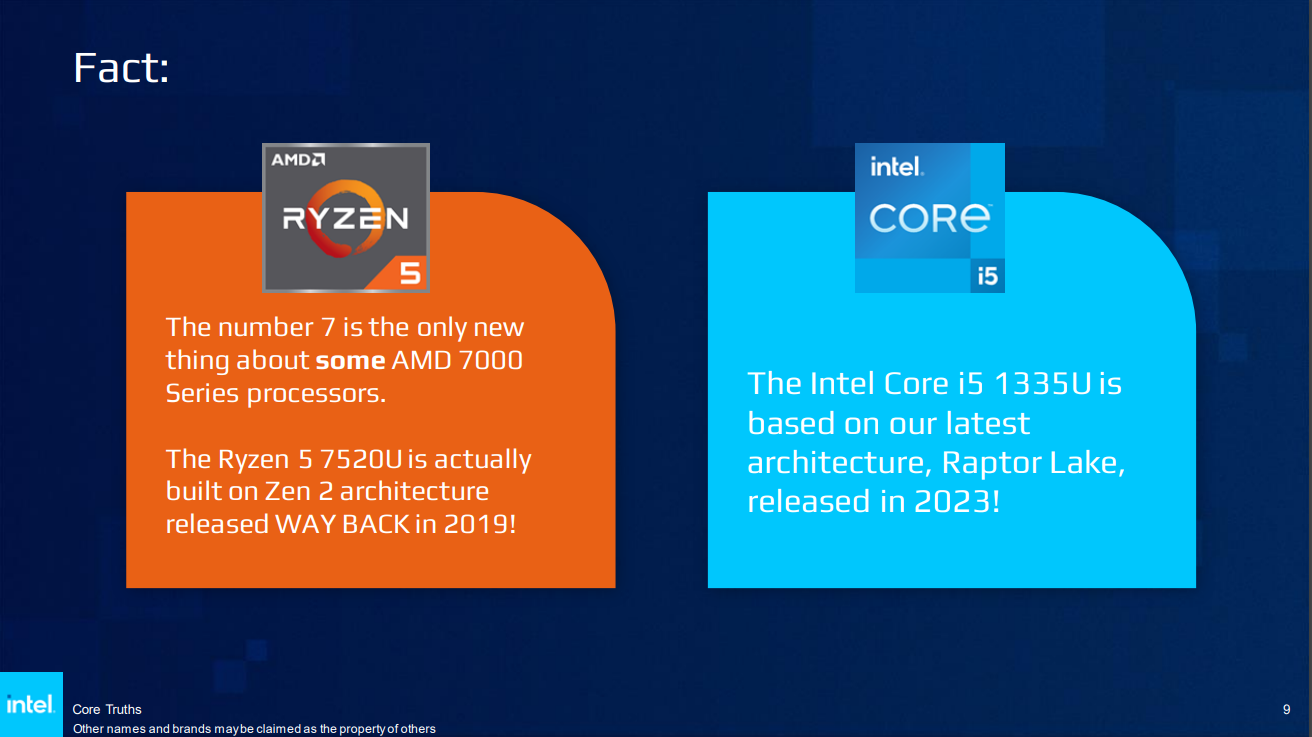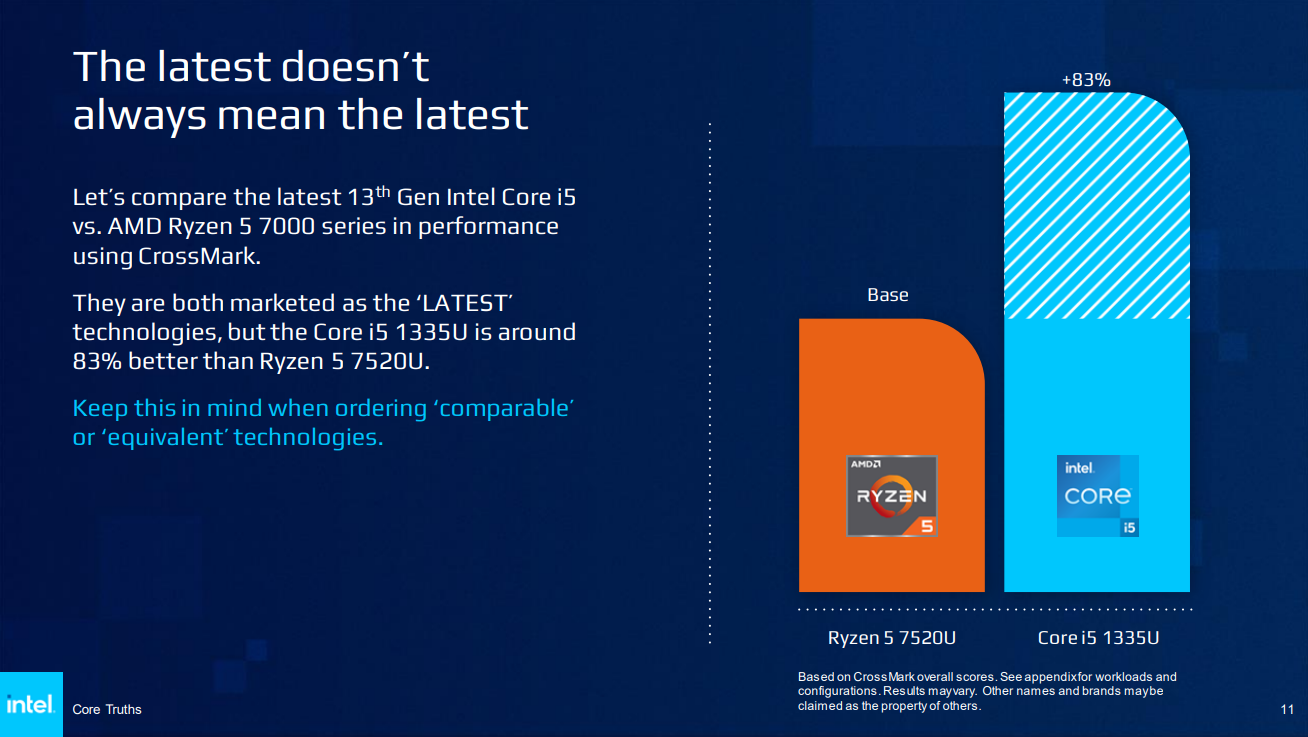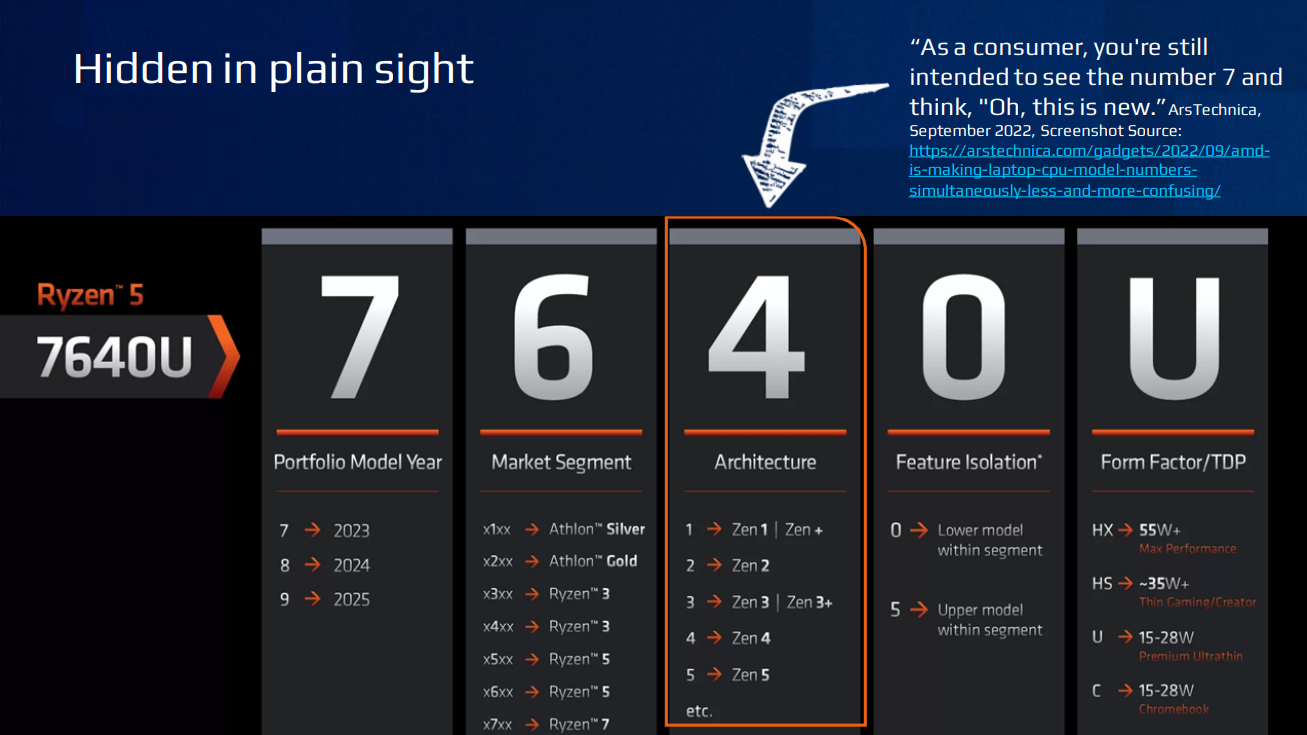
Intel recently published a new playbook titled "Core Truths" that put AMD under direct fire for utilizing its older Zen 2 CPU architecture in its latest Ryzen 7000 mobile series CPU product stack. Intel later removed the document, but we have the slides below. The playbook is designed to educate customers about AMD's product stack and even calls it "snake oil."
Intel's playbook specifically talks about AMD's latest Ryzen 5 7520U, criticizing the fact it features AMD's Zen 2 architecture from 2019 even though it sports a Ryzen 7000 series model name. Further on in the playbook, the company accuses AMD of selling "half-truths" to unsuspecting customers, stressing that the future of younger kid's education needs the best CPU performance from the latest and greatest CPU technologies made today. To make its point clear, Intel used images in its playbook referencing "snake oil" and images of used car salesmen.
The playbook also criticizes AMD's new naming scheme for its Ryzen 7000 series mobile products, quoting ArsTechnica: "As a consumer, you're still intended to see the number 7 and think, 'Oh, this is new.'" Intel also published CPU benchmark comparisons of the 7520U against its 13th Gen Core i5-1335U to back up its points. Unsurprisingly, the 1335U was substantially faster than the Zen 2 counterpart.





Some of the statements in Intel's playbook do have some merit. AMD's nomenclature for its Ryzen 7000 mobile parts can be confusing for novice consumers who haven't done their research. For reference, the number two in the Ryzen 5 7520U's product name states that the CPU comes with AMD's Zen 2 CPU architecture. If the chip had a newer architecture like Zen 3/Zen 3+, it would feature the number three; if it had Zen 4, it would have the number four, etc.
However, Intel's playbook unsurprisingly doesn't mention that it also uses similar strategies in its CPUs. In its 13th Gen Raptor Lake CPU lineup, Intel re-used its older 12th Gen Alder Lake CPU dies on its 13th Gen Core i3 and lower-end 13th Gen Core i5 models, effectively making them re-branded Alder Lake chips. This technique is one way CPU manufacturers maximize production efficiency.
In many ways, Intel is also doing this with all of its latest 14th-gen chips, featuring the Raptor Lake Refresh architecture. Despite the marketing increase in generational nomenclature, Intel's Raptor Lake Refresh architecture doesn't have any noteworthy IPC improvements to speak of over its Raptor Lake predecessor (found in 13th Gen chips). The only difference between the two is a minor fabrication change to a newer revision of the 'Intel 7' process node that enables slightly greater frequency headroom.
So, from a functionality standpoint, Intel's Raptor Lake Refresh chips are basically re-branded Raptor Lake chips, with the only difference being slightly higher core clocks on some models (except for the Core i7 variant). This makes them perform the same as their previous-gen counterparts (as our reviews have shown) despite having a brand-new nomenclature.
All in all, Intel's new playbook is highly hypocritical. It downplays AMD's decision to re-use its older CPU architectures in its latest Ryzen 7000 products, even though Intel does the same thing in its own product stack.







